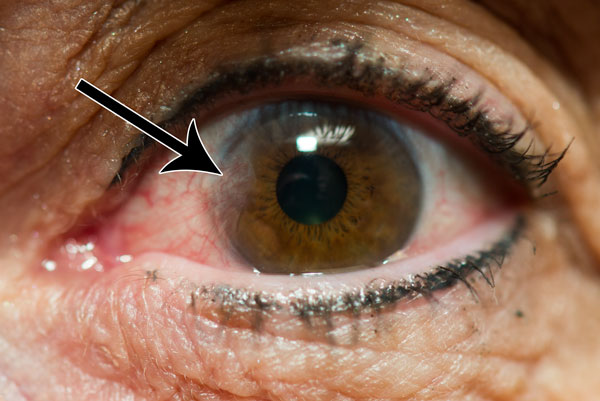If you work outdoors or in dusty environments and are experiencing blurred vision, eye irritation, or eye redness, learning about pterygium and its surgery may help restore your vision and relieve discomfort.

What is a pterygium? (pronounced ter-ridge-ee-um)
Pterygium surgery is necessary when the skin of the eye (conjunctiva) gets inflamed and grows onto the clear part of the eye (cornea). This growth is called a pterygium and can cause blurred vision, eye irritation and eye redness.
What is a pingueculum? (pronounced pin-gweck-you-lum)
A pingueculum is a white or yellowish growth on the white of your eye adjacent to the cornea. It doesn’t overlap onto the cornea like a pterygium. A pingueculum can get red and irritated and in certain people grow yellow and nodular.
What causes a pterygium?
A pterygium is thought to be caused by damage to the skin of the eye, usually from sun exposure. Pterygium is most common in people who work outdoors and in dusty environments. They also seem to be more prevalent in certain ethnic groups, such as Hispanics.
What causes a pingueculum?
Like a pterygium, a pingueculum is caused by sun damage to the tissues which cover the white of the eye. Wearing sunglasses and avoiding dust can reduce the chances of getting them.

Who needs pterygium surgery?
Pterygium surgery is performed when the pterygium has grown large enough to affect vision, or is causing significant eye irritation. A pterygium can cause astigmatism, which is a distortion of the shape of the cornea. A large pterygium can actually block the pupil.
How is pterygium surgery performed?
There are many techniques, but the pterygium surgery technique we prefer goes by the acronym P.E.R.F.E.C.T. It involves removing part of the pterygium on the cornea and the underlying tissues on the white of the eye which are inflamed. This creates a large opening in the skin of the eye, which is covered with a graft taken from the top of the eye under the upper eyelid. The graft is held in place with a biologic glue, which is much more comfortable than using stitches. When done in this fashion, recurrence is less than 1%. Other techniques can result in up to 50-60% recurrence.
What happens after pterygium surgery?
At the end of pterygium surgery, a dissolvable contact lens is placed on the eye and it is patched. The patch is removed the next day and the patient starts using antibiotic eye drops with steroid to decrease inflammation. The eye will be sore for 3-5 days and you’ll be given a prescription for pain medicine. We check you after a week to ensure you are healing, then after 6-8 weeks to evaluate your vision and improvement.
